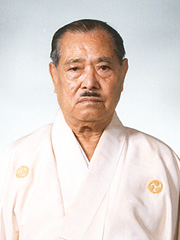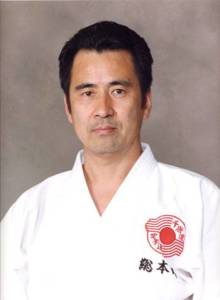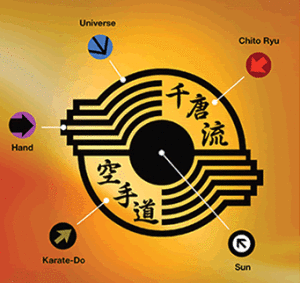Dr. Tsuyoshi Chitose
First Generation Chito-Ryu Soke
The history of the Japanese karate system of Chito-Ryu karate starts with its founder, Dr. Tsuyoshi Chitose. His first learning experience, before becoming a Japanese karate master, was the learning of the kate Seisan, which he is said to have practiced for seven years before being taught another at the age of 14. Prior to World War II, Chitose was regarded as one of the most outstanding kata masters in the Japanese empire. He studied Kobo-jutsu (art of weapons) with Gichin Funakoshi and another unspecified instructor at the Okinawan Engineering School. He studied Goju-ryu (hard-soft school) with Chojun Miyagi and Shorin-ryu with Choki Motobu. Dr. Chitose began teaching karate in Japan while still a student at the Tokyo Medical Center. He utilized concepts of both Shorin-ryu and Goju-ryu to formulate his own system of Chito-ryu. It is not considered a major style, but none-the-less, it has reported membership of approximately 42,000 in the southern most portion of Kyushu. In North America, the major players of this style are Mas Tsuroka and Shane Higashi of Canada and William Dometrich. Mr. Dometrich began his training in japan in 1951 and when returning in December 1954 to the United States, made his home in Kentucky.
Chito-ryu emphasizes conditioning of mind and body before the actual practice of self-defense. It is structured according to medical principles. Its moral code stresses fairness, tolerance patience, diligence, courtesy, sincerity and constant striving to better oneself spiritually, mentally and physically. The style’s supervisory body is the All Japan Karate-Do Federation Chito-Kai, headquartered in Kunamoto City, Japan. Promotions within the system is by examination and emphasis is placed on technical skill rather than fighting ability. They believe that fighting ability decreases with age, but that technical skill improves.
A note of uniqueness, is the fact that in 1960, Elvis Presley acquired a black-belt in Chito-Ryu. He qualified for this in Memphis, Tennessee, under the late Hank Slemansky. One other thing concerning Elvis Presley was that he was one of the first to use karate in American films.
Soke Sensei
Head of Chito-Ryu since 1984
Soke Sensei has been the Master of the International Chito Kai since 1984. In June 1984, the founder of Chito Ryu Karate, Dr. Chitose Sensei, passed away and his son Chitose Yasuhiro ascended to leader of the International Chito Kai. In keeping with traditional Japanese custom he changed his name to Chitose Tsuyoshi, in honour of his father.
Soke Sensei is the head of the International Chito Ryu Karate Federation. The International Technical Program for Chito Ryu is directed by Soke Sensei and members of the ICKF Technical Committee.
BC Chito Kai is associated with the International Chito Ryu Karate Federation and recognize Soke Sensei as Chito Ryu’s supreme leader.
Soke Sensei travels throughout all member countries, conducting annual Chito Ryu clinics and grading sessions at the request of member organizations. Soke Sensei travels throughout Canada, as head of Chito Ryu, and conducts his inspirational tour to meet all British Columbian Chito Ryu members.
Crest
The center circle represents the sun. The outer circle represents the universe. The five lines on the left and right are hands. The crest as a whole means: by studying Chito Ryu Karate-Do the people of the world are making a pledge of peace to come together hand in hand.
O-Sensei was told by Arigaki Sensei that Karate-do originated approximately one thousand years ago in China. Based on this, O-Sensei named his style ‘Chito Ryu’, according to the origins of Karate-do.
‘CHI’ means ‘one thousand’.
‘TO’ refers to China’s Tang dynasty (618-907), which is where To-de (which later became known as Karate-do) is commonly thought have sprung from.
‘RYU’ is the Japanese word for style.



